Abstract
Two families are described, each with a unique clinical variant of pseudoxanthoma elasticum (PXE) inherited in autosomal dominant fashion. Dominant type I PXE is characterized by a classical flexurally distributed rash, severe and frequent angina of effort, intermittent claudication and hypertension, and a very severe choroidoretinitis, often complicated by blindness. Dominant type II PXE, on the other hand, is a much milder form of the disease, with a macular rash (though identical histological changes), no vascular changes, and a very mild retinal degeneration, which does not progress to either blindness or choroidoretinitis. Younger members of these families often have prominent choroidal vessels. Formal analysis of the two pedigrees and all the pooled genetic data supported the autosomal dominant transmission of both these traits.
Full text
PDF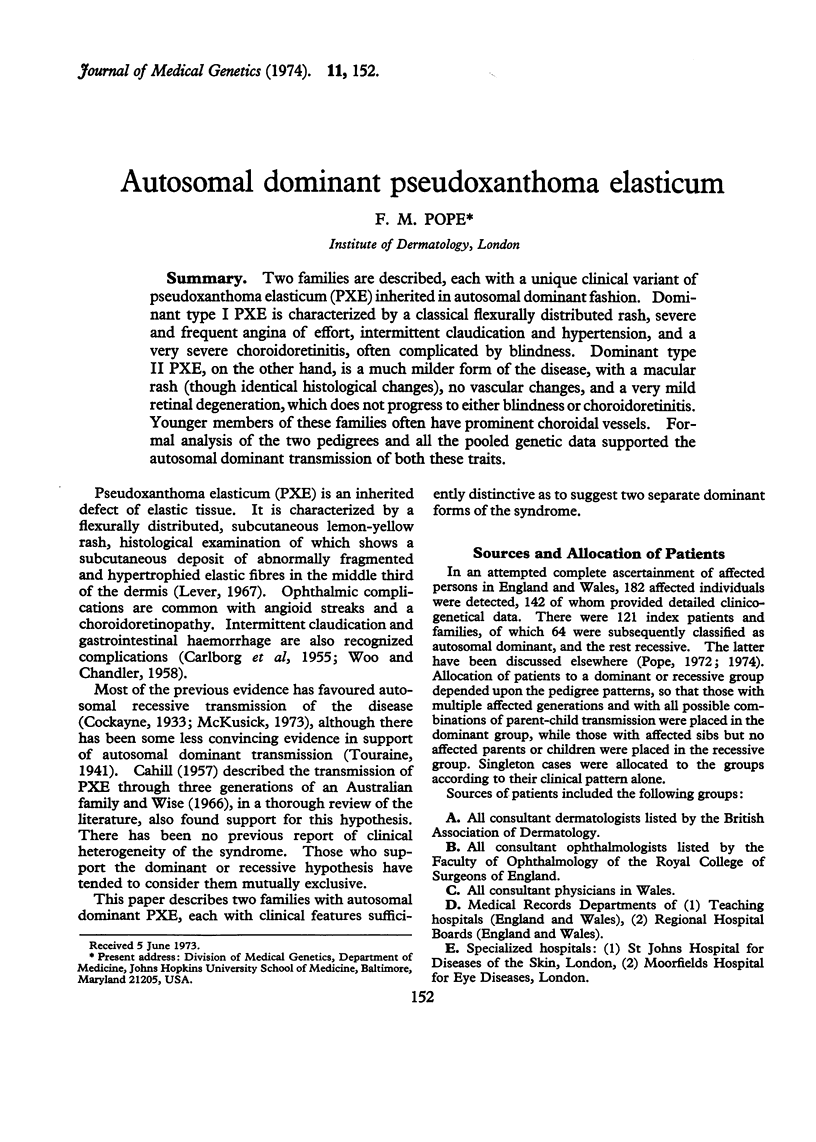
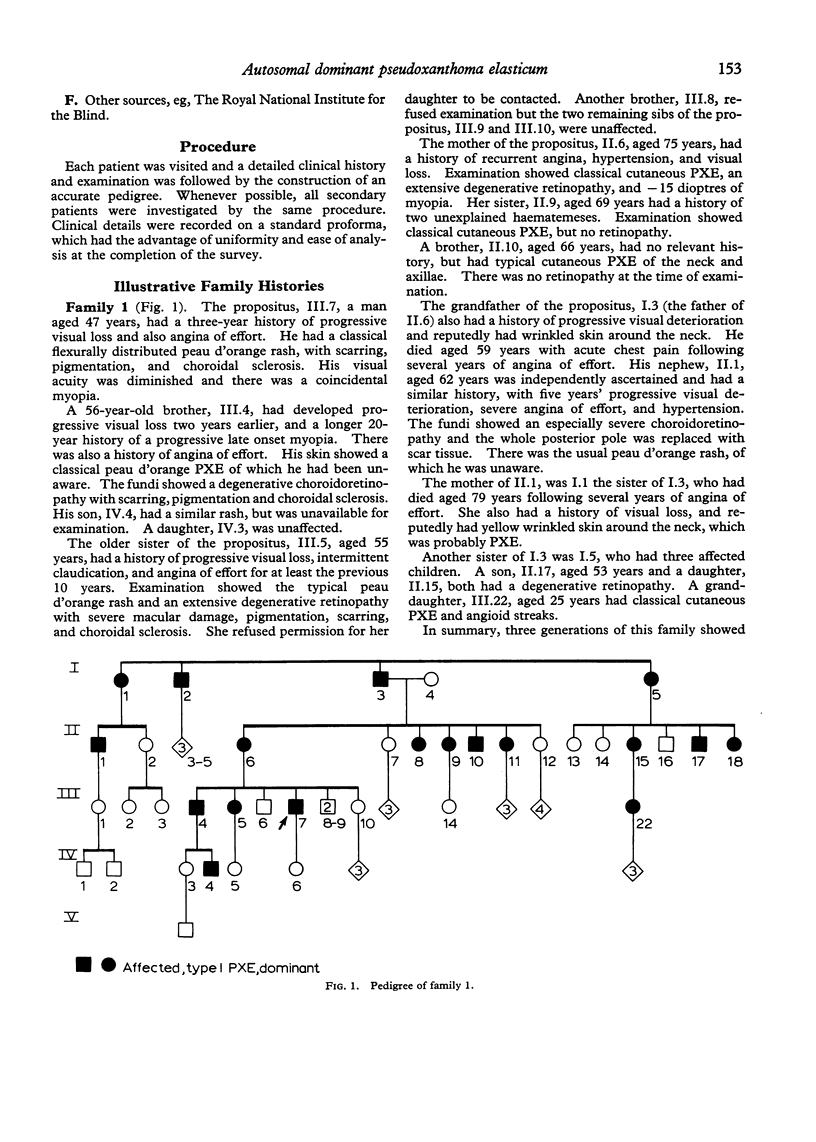
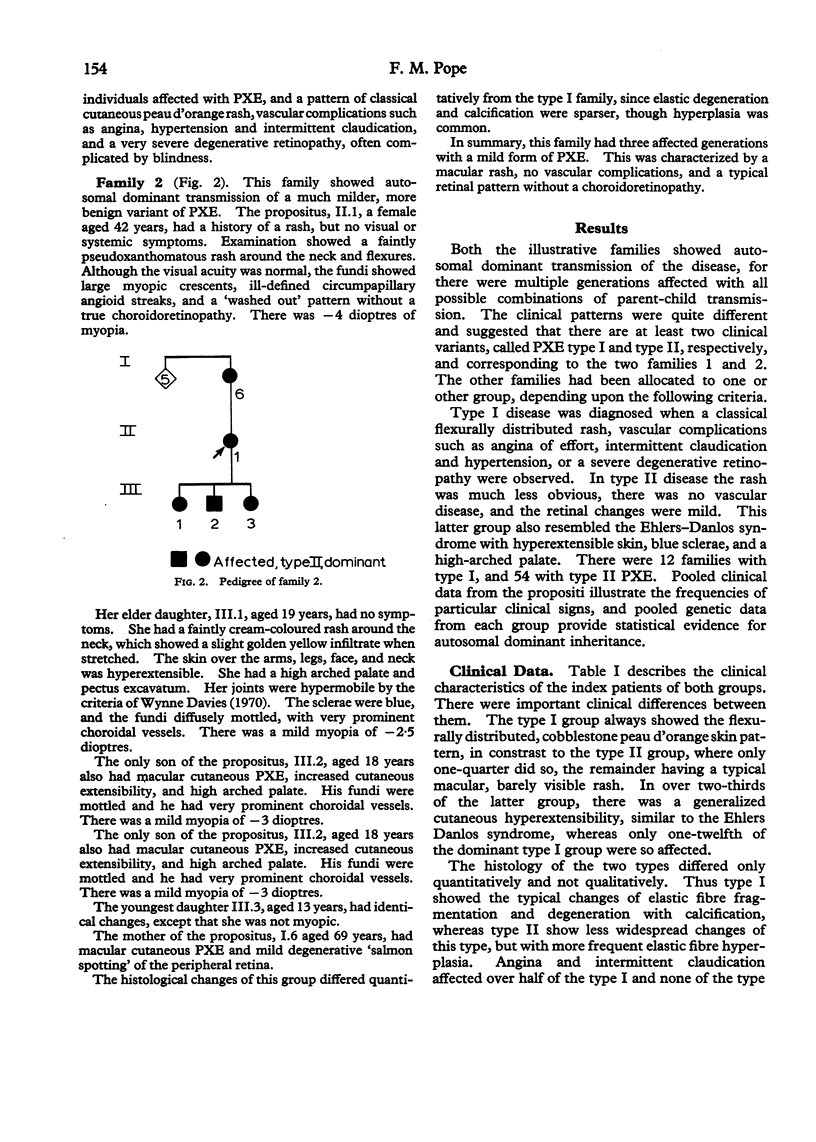
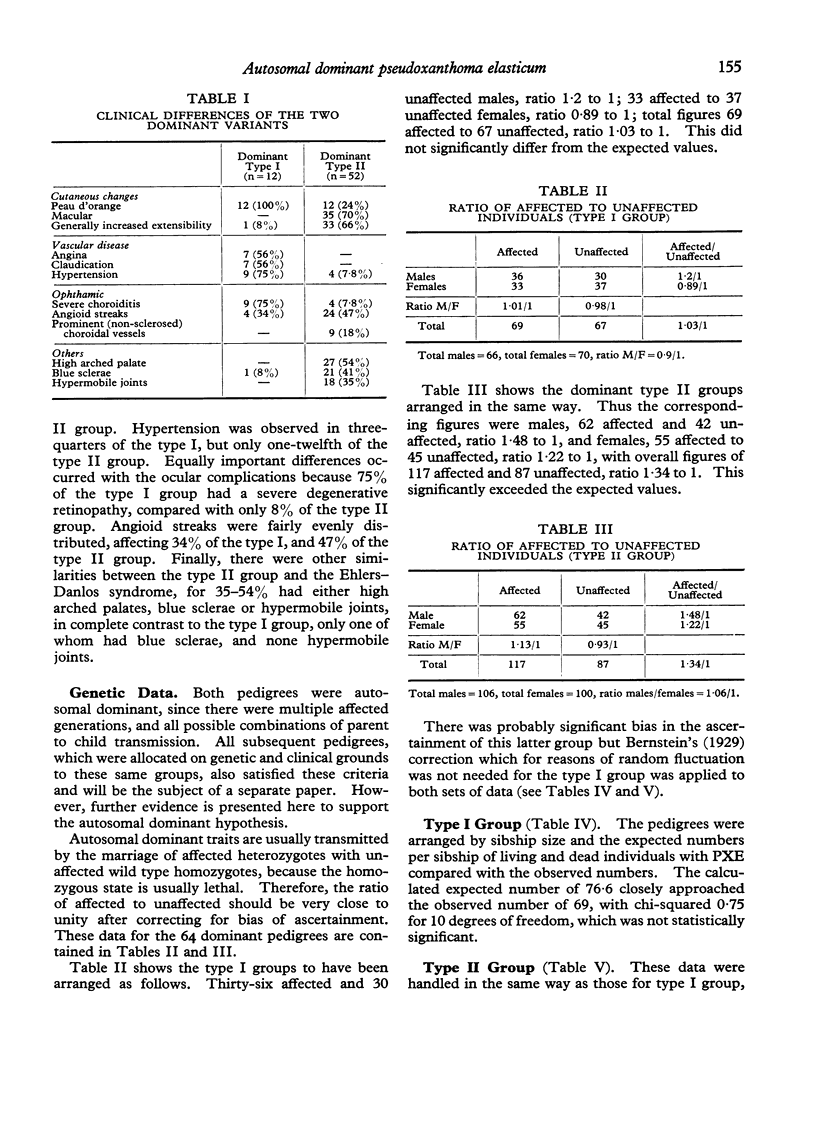

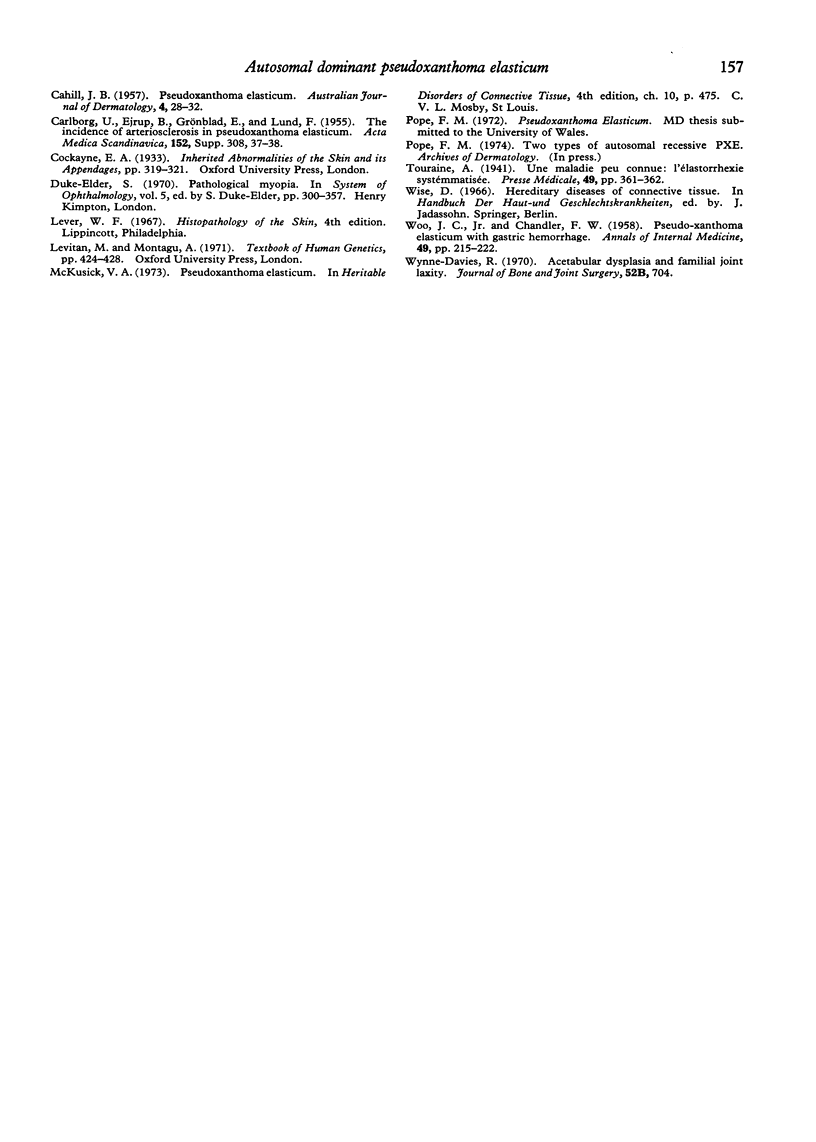
Selected References
These references are in PubMed. This may not be the complete list of references from this article.
- CAHILL J. B. Pseudo-xanthoma elasticum. Aust J Dermatol. 1957 Jun;4(1):28–32. doi: 10.1111/j.1440-0960.1957.tb01526.x. [DOI] [PubMed] [Google Scholar]
- WOO J. C., Jr, CHANDLER F. W. Pseudoxanthoma elasticum with gastric hemorrhage: report of a case. Ann Intern Med. 1958 Jul;49(1):215–222. doi: 10.7326/0003-4819-49-1-215. [DOI] [PubMed] [Google Scholar]
- Wynne-Davies R. Acetabular dysplasia and familial joint laxity: two etiological factors in congenital dislocation of the hip. A review of 589 patients and their families. J Bone Joint Surg Br. 1970 Nov;52(4):704–716. [PubMed] [Google Scholar]


